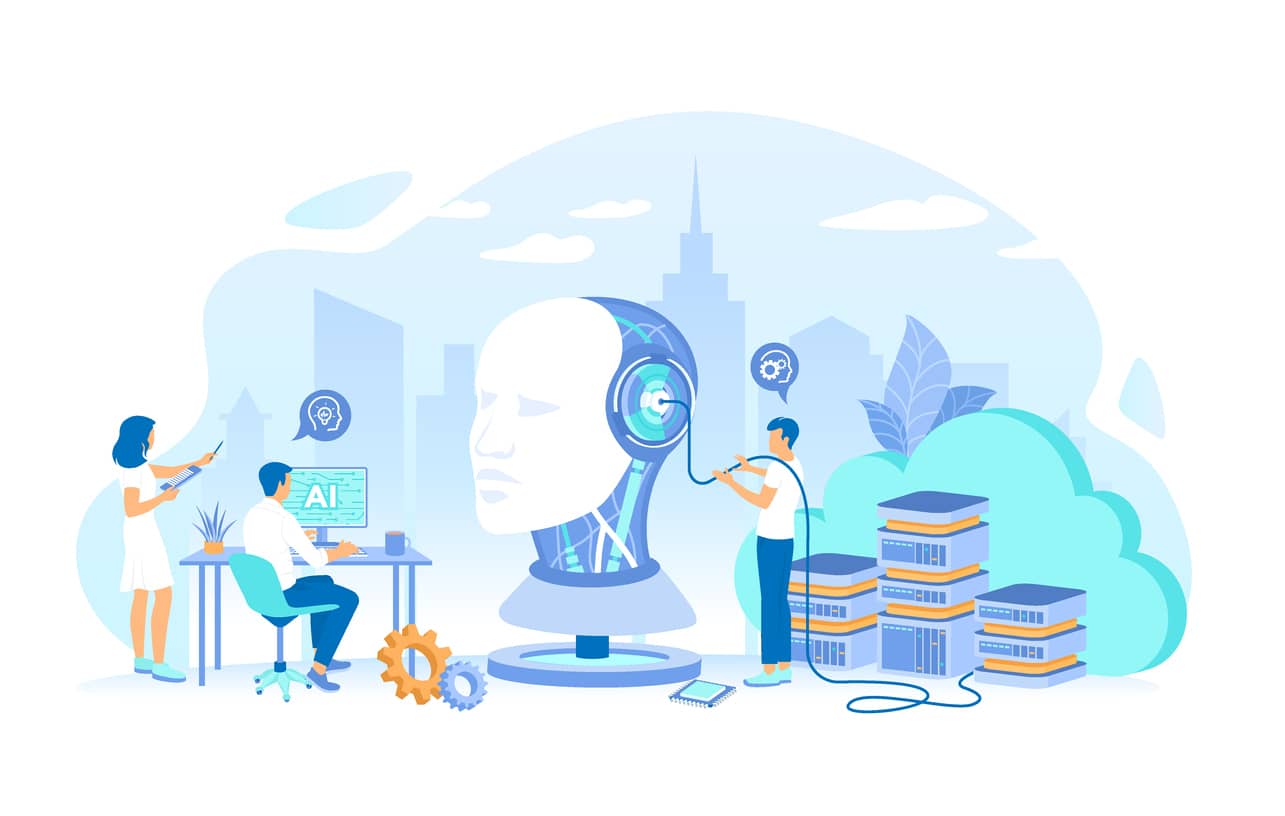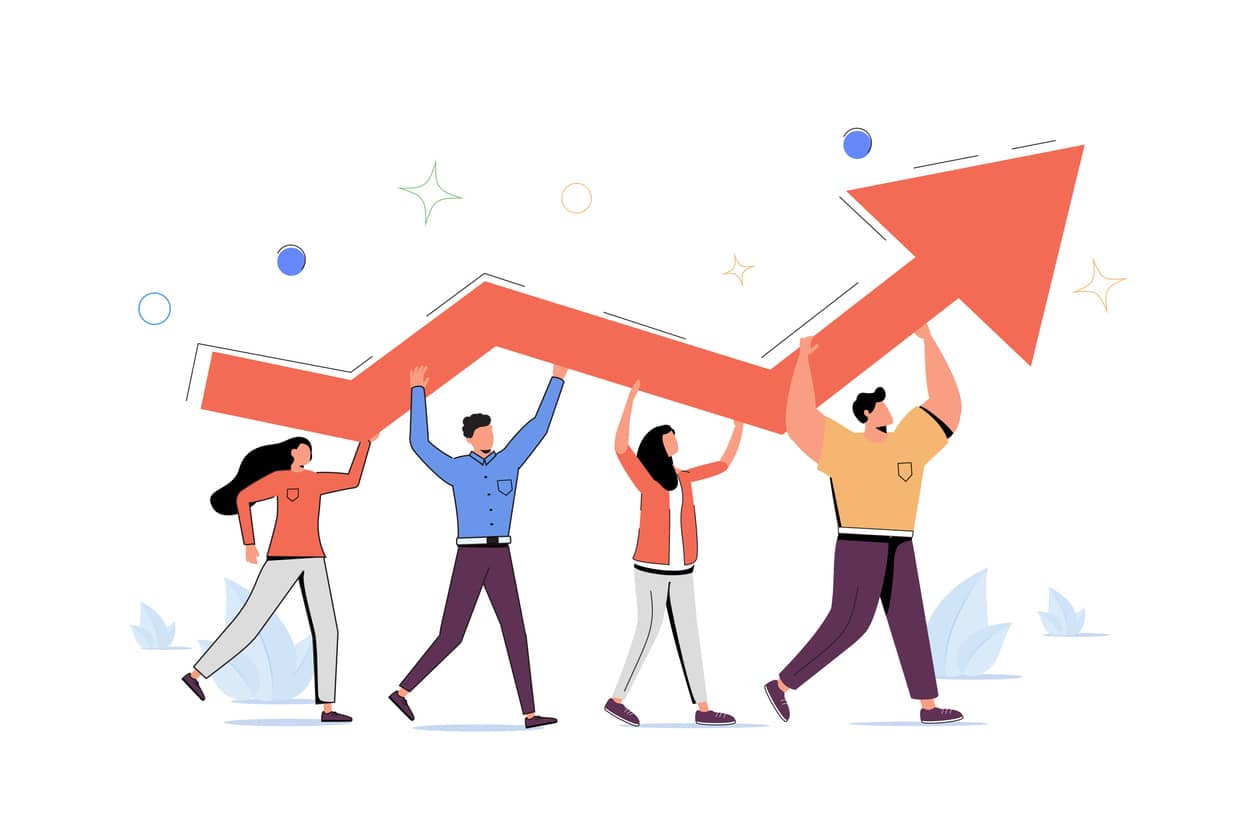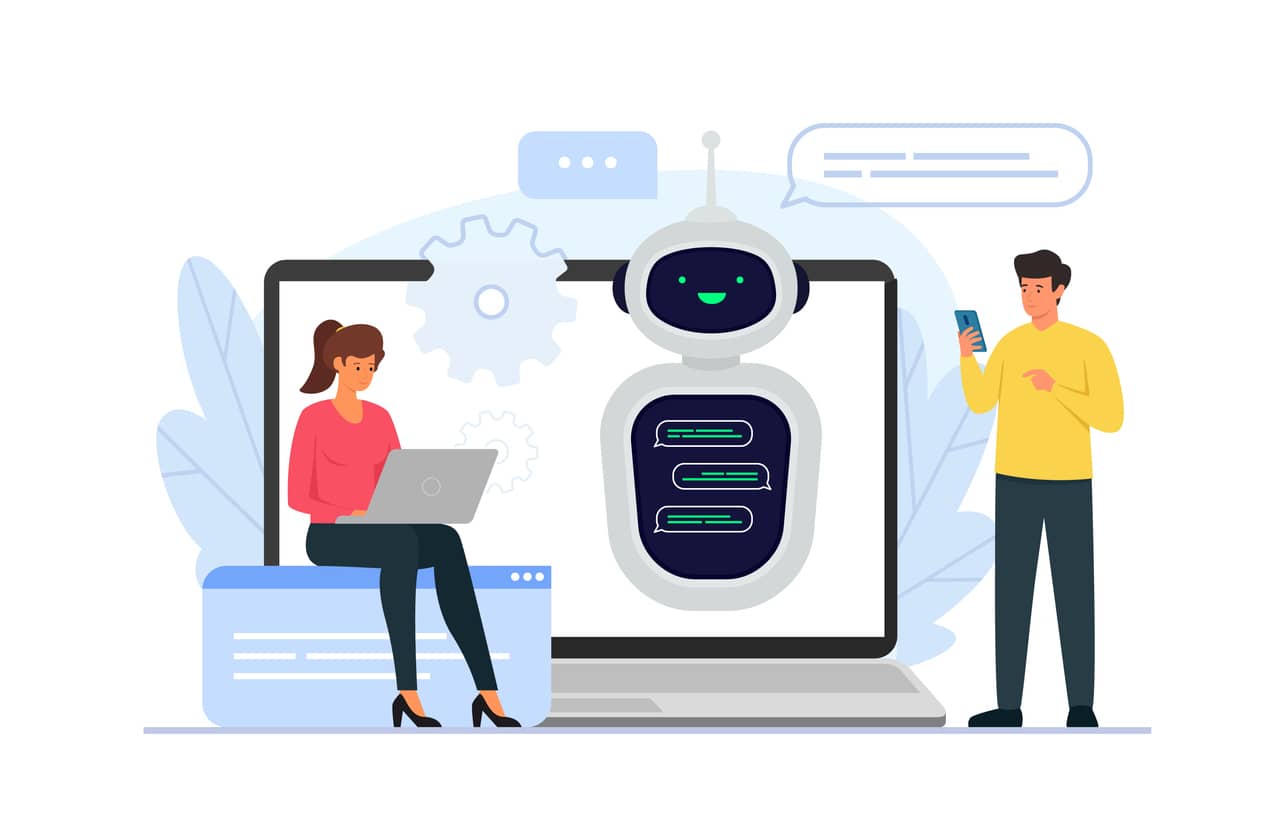What is Generative AI?
Generative AI is a breakthrough in artificial intelligence that focuses on creating new, original content.
This could range from written text and visual images to complex video sequences and music compositions. Unlike traditional AI models geared towards understanding or classifying data, generative AI is about producing new data, often indistinguishable from human-created content.
It uses sophisticated algorithms known as generative models, trained on vast datasets, to make novel yet familiar content. This technology is not just a tool; it’s a paradigm shift, offering unprecedented opportunities for innovation in various fields.

How Generative AI Works
The magic of generative AI lies in machine learning, particularly in a subset known as deep learning. These systems are trained on extensive datasets, learning the underlying patterns, styles, and structures. This training enables them to generate new content that convincingly mimics the original data.
For instance, language models like Google Cloud’s AI and OpenAI’s ChatGPT have been trained on vast amounts of text, allowing them to generate coherent, contextually relevant text responses.
Similarly, models like Dall-E can create stunningly realistic images based on textual descriptions. This capability marks a significant leap in machine learning and artificial intelligence, opening new avenues for creative and efficient problem-solving.

What are the Benefits and Limitations of Generative AI?
Benefits of AI
There are numerous advantages to employing generative AI in the workplace. In a nutshell:
- It augments human creativity, enabling the generation of unique ideas and solutions that might not be conceivable by human minds alone. This aspect is crucial in creative industries like advertising, design, and content creation.
- Generative AI significantly boosts productivity by automating routine tasks, analyzing large datasets quickly, and generating reports, freeing human workers to focus on more complex tasks.
- It allows for personalized user experiences, tailoring content and recommendations to individual preferences, which is invaluable in marketing and customer service.
A deeper dive into the benefits of AI
Enhancing Human Creativity
Generative AI stands as a monumental ally in creativity. Generating new ideas and solutions transcends the conventional boundaries of human thought. This technology is especially transformative in creative sectors such as advertising, where it can conceive unique and engaging campaigns, and in design, where it can suggest innovative layouts and aesthetics.
In content creation, generative AI is a powerful collaborator, offering fresh perspectives and ideas that can resonate with diverse audiences. It’s not just about replacing human creativity; it’s about amplifying it, taking it to new heights where the blend of human intuition and AI’s computational power can create groundbreaking work.
Boosting Productivity
The impact of generative AI on productivity cannot be overstated. By taking over repetitive and time-consuming tasks, such as data entry, analysis, information retrieval, and report generation, AI frees up human employees to engage in more strategic, creative, and complex problem-solving activities.
In fields like finance, AI can analyze market trends and generate comprehensive reports in a fraction of the time it would take a human analyst. In HR, it can sift through thousands of resumes, identifying the most promising candidates based on parameters set by human recruiters. This level of efficiency speeds up processes and reduces the likelihood of human error, resulting in more accurate outcomes. In Internal Communications, AI can simplify content creation and search, allowing comms managers to focus on strategy and connection.
Personalizing User Experiences
Generative AI’s ability to tailor experiences to individual preferences revolutionizes customer interaction.
In marketing, AI can analyze customer data to personalize advertising, ensuring that individuals are shown products that align with their interests and buying habits. This personalized approach enhances the customer experience and increases the effectiveness of marketing campaigns.
In customer service, AI-powered chatbots can provide instant, personalized responses to customer inquiries, improving response times and customer satisfaction. These chatbots can learn from each interaction, continuously improving their ability to assist customers in a more human-like manner.
Limitations of AI
However, generative AI is not a panacea.
- One of its main limitations is the reliance on the quality and diversity of the training data. AI models can inadvertently perpetuate biases in the training data, leading to skewed or unfair outcomes.
- There’s also the challenge of authenticity and ethical use, particularly in creating deepfakes or synthetic media, which can be used for misinformation or malicious purposes.
Indeed, while generative AI has a vast array of benefits, it’s crucial to acknowledge and understand its limitations. Here’s an expanded view of some of these critical limitations:
Dependence on Quality and Diversity of Data
One of the fundamental limitations of generative AI is its heavy reliance on the data used for training. The adage “garbage in, garbage out” is particularly relevant here. If the training data is biased, incomplete, or of poor quality, the AI’s output will reflect these flaws.
For instance, if a language model like ChatGPT is trained on text data that contains biased language or perspectives, it may generate content that perpetuates these biases. This limitation raises significant concerns, especially when AI is used in sensitive areas like recruitment, law enforcement, or credit scoring, where biased AI decisions could have profound implications for individuals and society.
Challenges with Authenticity and Ethical Use
The ease with which generative AI can create realistic content also brings ethical challenges, particularly concerning authenticity. Technologies like deepfakes, which involve using AI to create hyperrealistic but entirely synthetic images or videos, pose a significant threat regarding misinformation and manipulation.
These technologies can be used to create false narratives or impersonate individuals, leading to concerns about trust and truth in the digital age. The potential misuse of generative AI for malicious purposes underscores the need for robust ethical frameworks and regulations to govern its use.
The Complexity of Understanding and Interpreting AI Decisions
Another significant limitation of generative AI is the often opaque nature of its decision-making processes. Many AI models, particularly deep learning models, operate as “black boxes,” where humans do not easily interpret the decision-making process.
This lack of transparency can be a significant issue in scenarios where understanding the rationale behind a decision is critical, such as in healthcare diagnostics or judicial decisions. Trusting and validating its decisions becomes challenging without a clear understanding of how and why an AI model arrives at a particular conclusion.
Generative AI: Challenges and Ethical Considerations
The rise of generative AI brings many ethical questions and challenges.
The potential misuse in creating deepfakes, spreading misinformation, and infringing intellectual property rights requires addressing. Establishing ethical guidelines and robust regulatory frameworks is essential to ensure the responsible use of this powerful technology. These measures should prevent misuse while encouraging innovation and the positive benefits of AI.

Impossible to Talk About Artificial Intelligence Without Mentioning Bard, ChatGPT, and Dall-E
Trailblazers like Bard, ChatGPT, and Dall-E have significantly shaped the landscape of AI.
These platforms demonstrate the remarkable capabilities of generative AI, especially in understanding and generating human-like language and creating visually stunning images from textual descriptions. They serve as examples of the immense potential of AI to revolutionize various sectors, from education and healthcare to entertainment and beyond.
Discover how OpenAI is transforming the digital workplace at the power of OPENAI for the digital workplace.
What Does the Future Hold for Artificial Intelligence?
As we look towards the future, it’s evident that artificial intelligence, especially generative AI, will play a central role in shaping our world. We can anticipate more sophisticated and nuanced AI models capable of producing increasingly realistic and complex outputs. This advancement will blur the lines between AI-generated and human-generated content, offering novel ways of creating, communicating, and experiencing the world around us.
Tools like Powell Governance and Powell Intranet are at the forefront, harnessing AI’s power to transform workplace efficiency and foster innovation.
In conclusion, generative AI is a transformative force, redefining the limits of what’s possible in the digital age. As we integrate this technology into our workplaces and daily lives, we must also navigate its challenges and ethical implications with care. The journey into the AI-augmented future of work is not just about technological advancement but also responsible innovation and sustainable progress.
